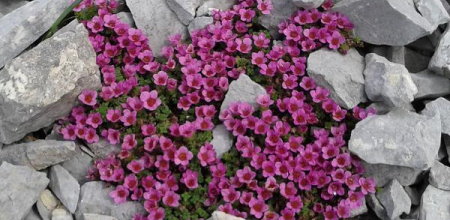Plant of the Month
Other plants of the month
-
Feb, 2023 Aquilegia flabellata
-
Jan, 2023 Draba rigida var. bryoides
-
Nov, 2022 Gentiana sino-ornata
-
Nov, 2022 Colchicum X agrippinum
-
Oct, 2022 Actaea asiatica
-
Oct, 2022 Cassiope mertensiana
-
Jul, 2022 Helianthemum nummularium
-
Jul, 2022 Viola lutea
-
Jul, 2022 Campanula cochlearifolia
-
May, 2022 Abies balsamea 'Nana'
-
Mar, 2022 Calceolaria biflora
-
Mar, 2022 Epimedium grandiflorum
- ‹ previous
- 4 of 17
- next ›
Astragalus chamaeleuce
January 2026
Astragalus chamaeleuce is commonly called the cicada milk-vetch. It is native primarily in Utah and neighboring areas of Montana, Wyoming and Colorado, where it grows in semi-desert regions, and open juniper scrubland. Plants are generally under 15 cm, with pinnate, silvery-green leaves and nearly stemless magenta-pink flowers. Swollen bladder-like pods are an interesting feature later in the season.


